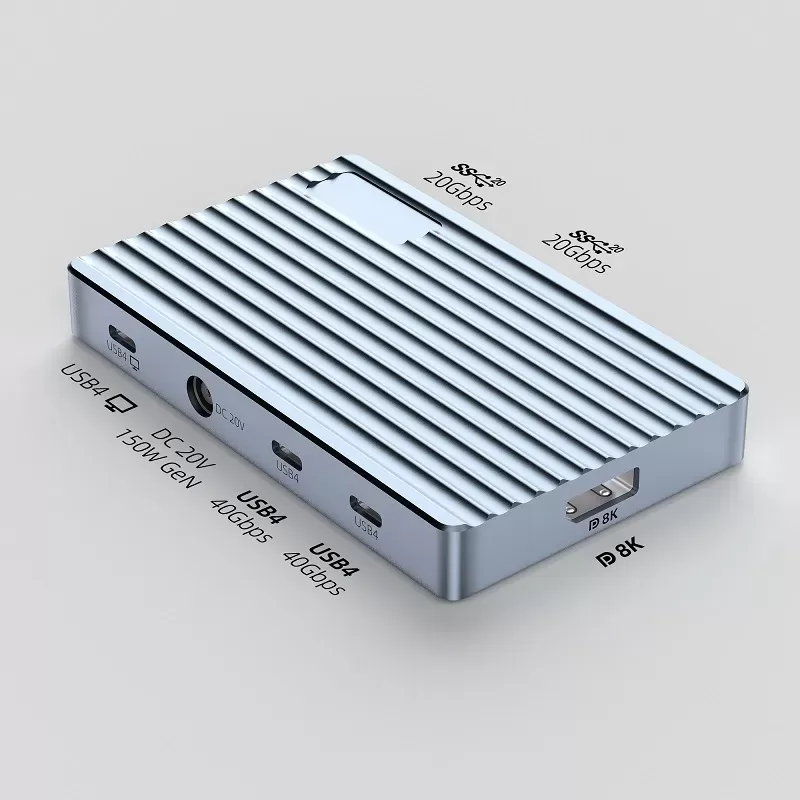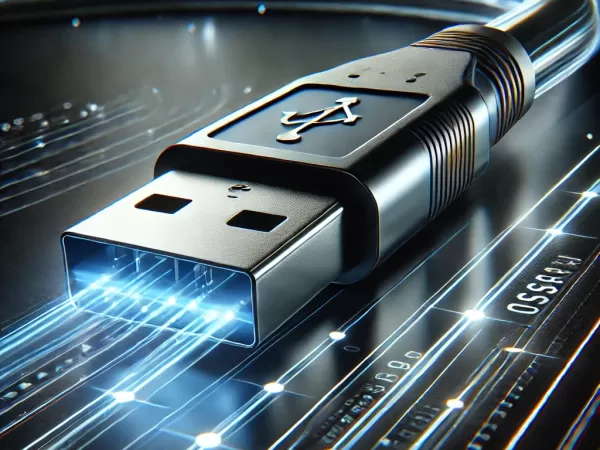USB4 is the latest USB protocol, designed to improve speed, efficiency, and versatility over previous USB generations. Introduced by the USB Implementers Forum (USB-IF), USB4 is based on Intel’s Thunderbolt 3 technology and provides significant performance upgrades and enhanced capabilities.
1.Key Features of USB4:
High Speeds: USB4 supports data transfer rates of up to 40 Gbps, which doubles the maximum speeds of USB 3.2.
Thunderbolt 3 Compatibility: USB4 is backward compatible with Thunderbolt 3, meaning that USB4 ports can work with Thunderbolt 3 devices and vice versa.
Improved Bandwidth Allocation: USB4 optimizes the bandwidth sharing between different types of data and display protocols, making it more efficient, especially when connecting multiple devices.
Enhanced Power Delivery: USB4 is designed to work well with USB Power Delivery (USB PD) technology, enabling faster and more powerful charging options.
2.Benefits of USB4:
Faster and More Reliable Data Transfers: Ideal for high-resolution video transmission and fast data transfers in devices like external hard drives and docking stations.
Single Connector Standard: USB4 exclusively uses USB-C connectors, eliminating confusion and simplifying the connection process.
Backward Compatibility: USB4 supports previous USB standards (like USB 3.x and USB 2.0), providing flexibility for various devices and accessories.
USB4 is a major step forward for USB technology, especially for users who work with data-intensive devices and want the convenience of a single, versatile connection.

3.Key Components and Requirements
USB-C Connector: USB4 requires a USB-C connector and requires support for USB PD (Power Delivery) for power delivery. The dedicated lines in the USB-C connector always support USB 2.0.
Tunneling: USB4 itself does not provide any general data transmission mechanism or device class, but is mainly used to provide tunnels for transmitting other protocols (such as USB 3.2, DisplayPort, and optional PCIe).
Power Requirements: Each interface of the USB4 power supply must provide at least 7.5W (5V, 1.5A) of power. Before USB PD negotiation, the power consumption of USB4 devices needs to be less than 250mA (default), 1.5A or 3A, 5V (this depends on the resistance configuration of USB-C). USB PD can provide up to 100W of power.
4.Application Scenarios and Advantages
High-resolution display connection: USB4's high bandwidth makes it particularly good at connecting to high-resolution displays. With a single USB4 cable, users can connect multiple 4K displays, or even 8K displays, to enjoy a high-definition visual experience. At the same time, it also supports HDR (high dynamic range) for more realistic image quality.
External graphics cards and storage devices: For users who need high-performance graphics processing, USB4 provides convenience for connecting external graphics cards. Through the USB4 interface, users can connect an external GPU to improve the graphics processing capabilities of a laptop or other device. Similarly, USB4 also performs well when transferring large-capacity files, such as when connecting an external SSD hard drive or NAS device, the transmission speed is greatly improved.
Docking station and multitasking: USB4 is compatible with various docking stations and can easily connect multiple external devices, including monitors, keyboards, mice, storage devices, etc. This multitasking capability is particularly critical in modern work environments, especially for users who need to switch tasks frequently. USB4 can ensure stable connection and high-speed transmission of various devices.
Virtual Reality and Augmented Reality: Virtual Reality (VR) and Augmented Reality (AR) devices usually require high-speed data transmission and high-quality video output. USB4 provides sufficient bandwidth to support the connection of VR/AR devices, ensuring that users can get a smooth immersive experience.
In summary, the USB4 protocol, with its high-speed transmission, multi-protocol support, dynamic resource allocation and wide compatibility, is gradually changing the way modern devices are connected and has a profound impact in many fields.

